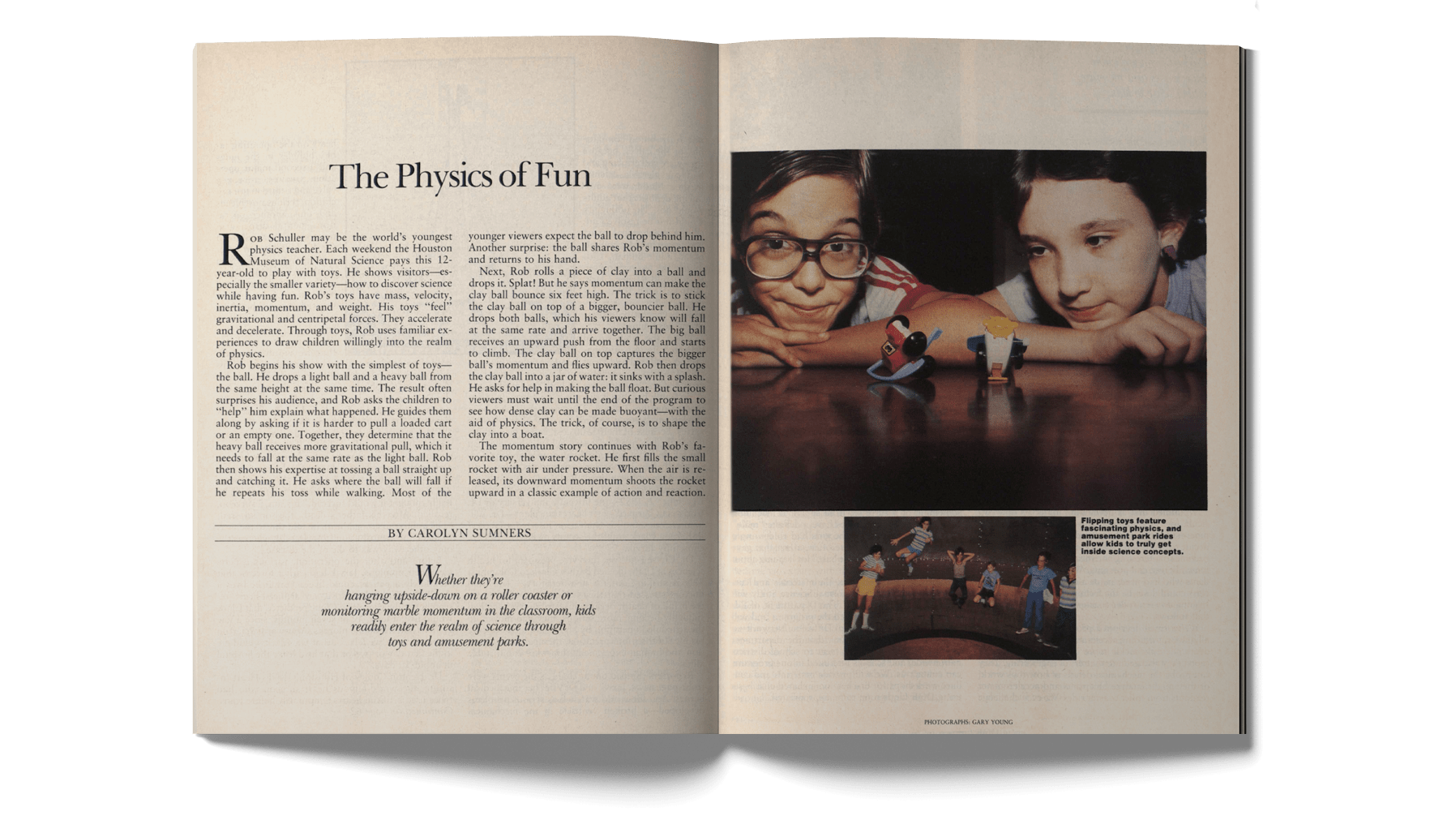What if your favorite childhood toys like balls, Frisbees, and jacks could predict the future?

In a November 1984 story for Technology Review, Carolyn Sumners, curator of astronomy at the Houston Museum of Natural Science, described how toys, games, and even amusement park rides could change how young minds view science and math. “The Slinky,” Sumners noted, “has long served teachers as a medium for demonstrating longitudinal (soundlike) waves and transverse (lightlike) waves.” A yo-yo can be used as a gauge (a “yo-yo meter”) to observe the forces on a roller coaster. Marbles employ mass and velocity. Even a simple ball offers insights into the laws of gravity.
While Sumners focused on physics, she was onto something bigger. Over the last several decades, evidence has emerged that childhood play can shape our future selves: the skills we develop, the professions we choose, our sense of self-worth, and even our relationships.
That doesn’t mean we should foist “educational” toys like telescopes or tiny toolboxes on kids to turn them into astronomers or carpenters. As Sumners explained, even “fun” toys offer opportunities to discover the basic principles of physics.
Don’t settle for half the story.
Get paywall-free access to technology news for the here and now.
Subscribe now
Already a subscriber?
Sign in
MIT Technology Review provides an
intelligent and independent filter for the
flood of information about technology.
Subscribe now
Already a subscriber?
Sign in
According to Jacqueline Harding, a child development expert and author of The Brain That Loves to Play, “If you invest time in play, which helps with executive functioning, decision-making, resilience—all those things—then it’s going to propel you into a much more safe, secure space in the future.”
Sumners was focused mostly on hard skills, the scientific knowledge that toys and games can foster. But there are soft skills, too, like creativity, problem-solving, teamwork, and empathy. According to Harding, the less structure there is to such play—the fewer rules and goals—the more these soft skills emerge.
“The kinds of playthings, or play activities, that really produce creative thought,” she says, “are natural materials, with no defined end to them—like clay, paint, water, and mud—so that there is no right or wrong way of playing with it.”
Playing is by definition voluntary, spontaneous, and goal-free; it involves taking risks, testing boundaries, and experimenting. The best kind of play results in joyful discovery, and along the way, the building blocks of innovation and personal development take shape. But in the decades since Sumners wrote her story, the landscape of play has shifted considerably. Recent research by the American Academy of Pediatrics’ Council on Early Childhood suggests that digital games and virtual play don’t appear to confer the same developmental benefits as physical games and outdoor play.
“The brain loves the rewards that are coming from digital media,” says Harding. But in screen-based play, “you’re not getting that autonomy.” The lack of physical interaction also concerns her: “It is the quality of human face-to-face interaction, body proximity, eye-to-eye gaze, and mutual engagement in a play activity that really makes a difference.”
Bill Gourgey is a science writer based in Washington, DC.




